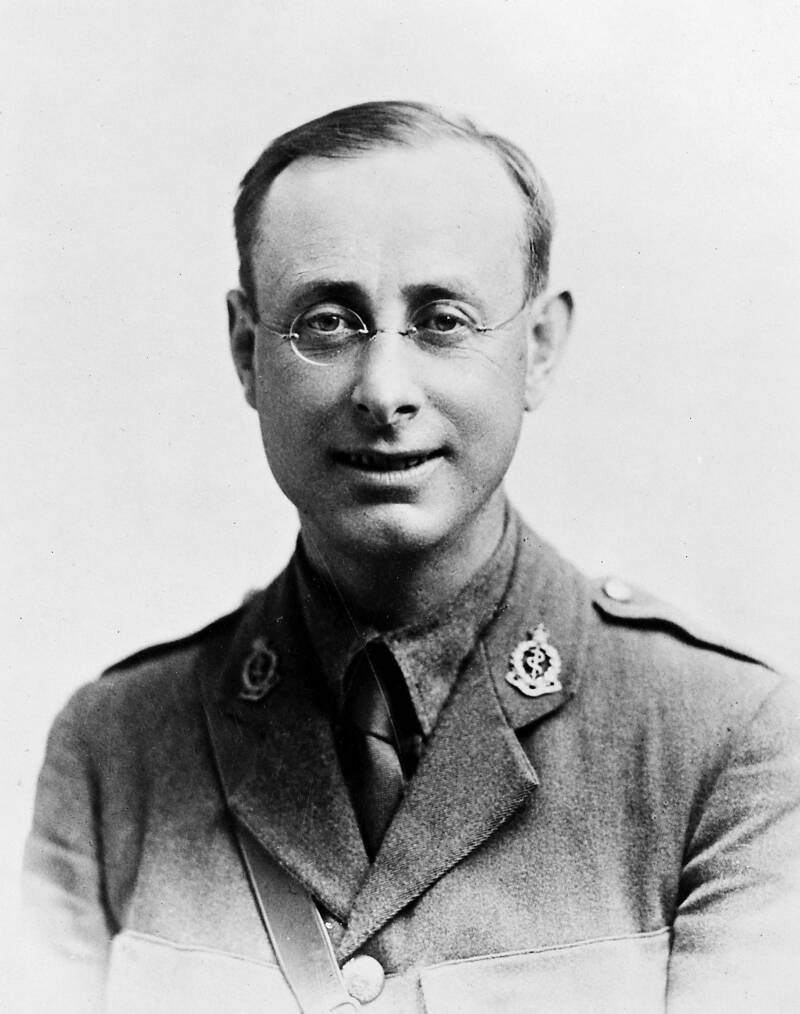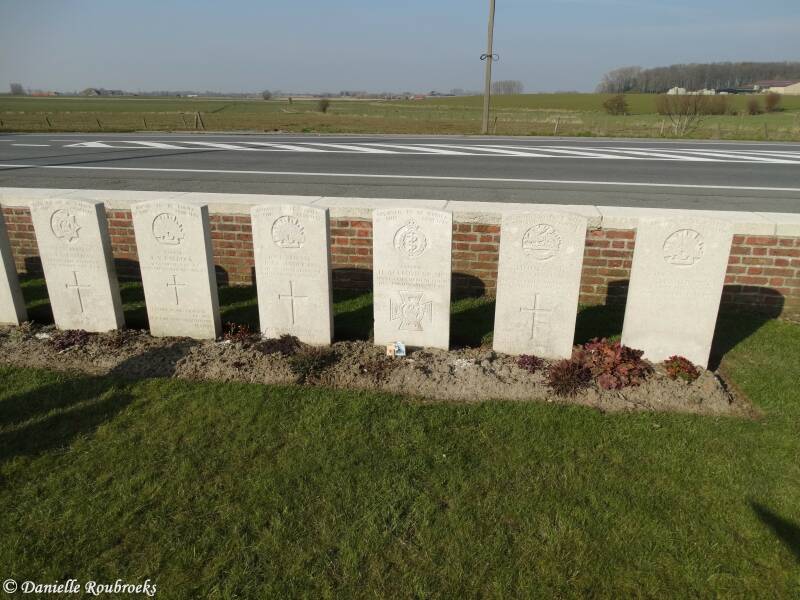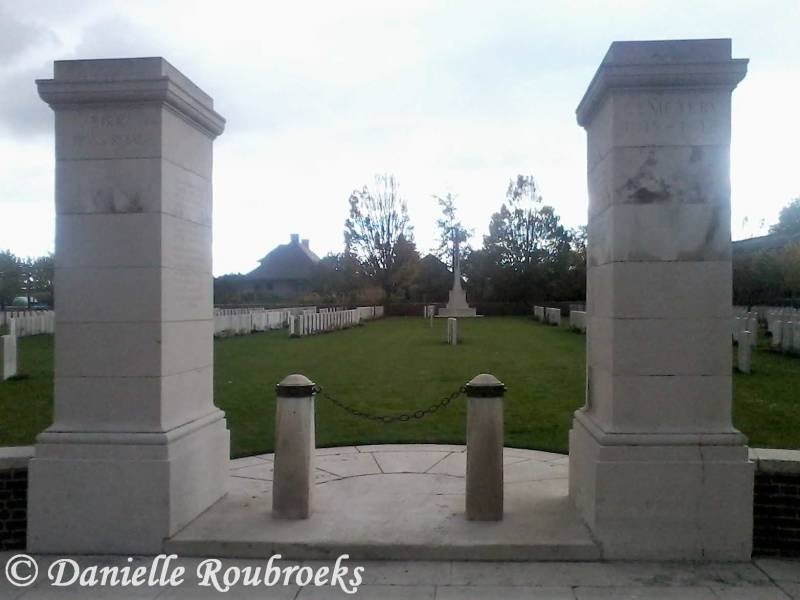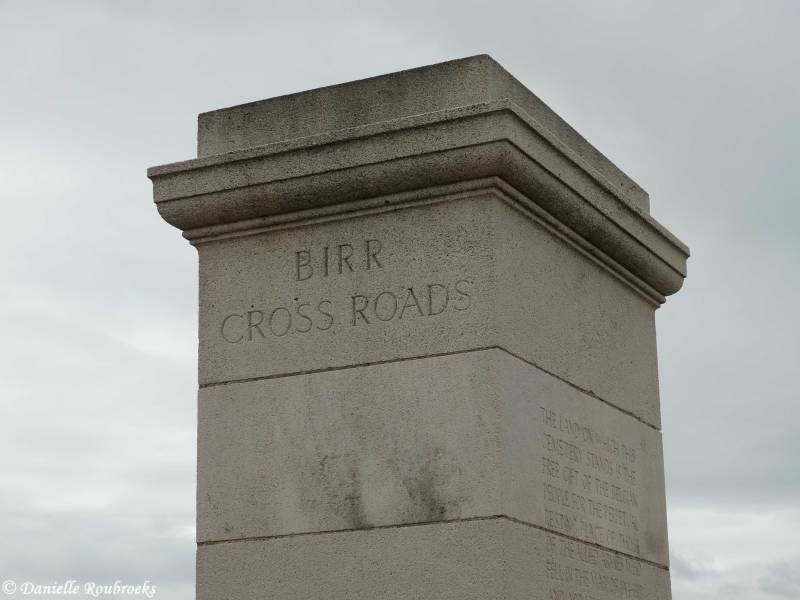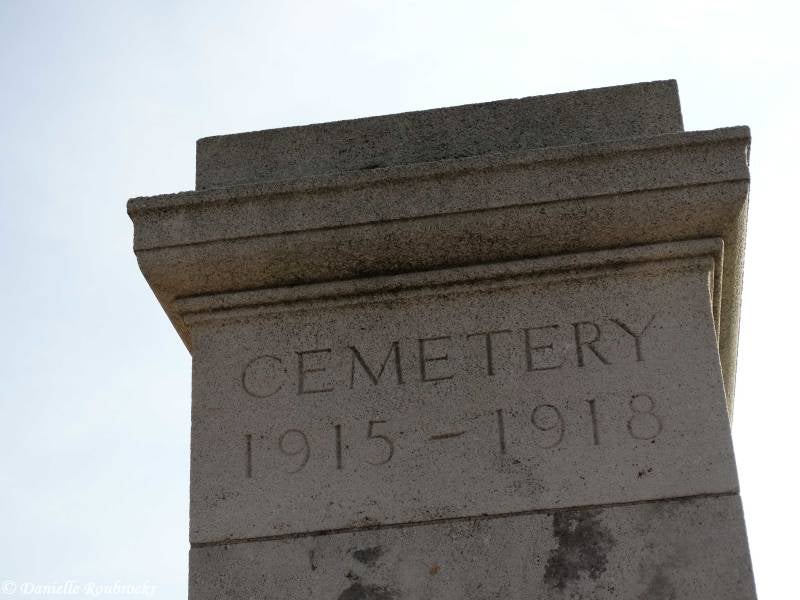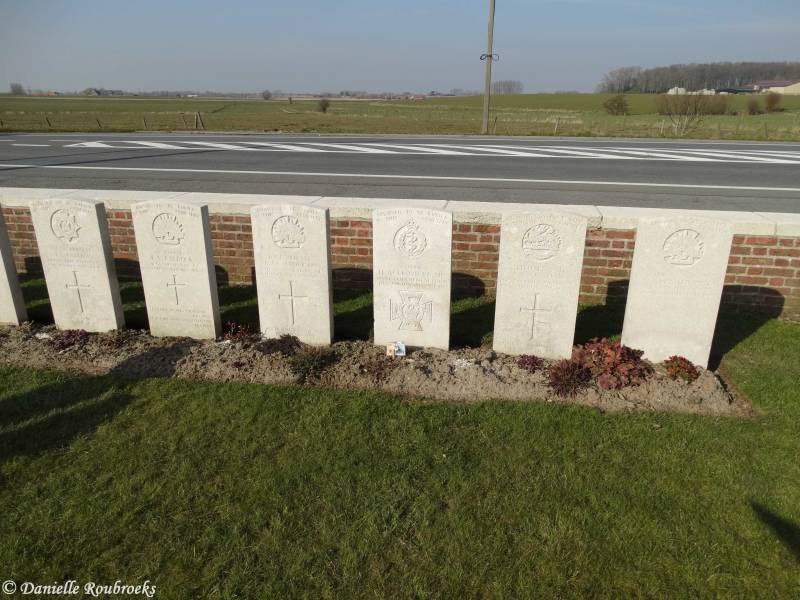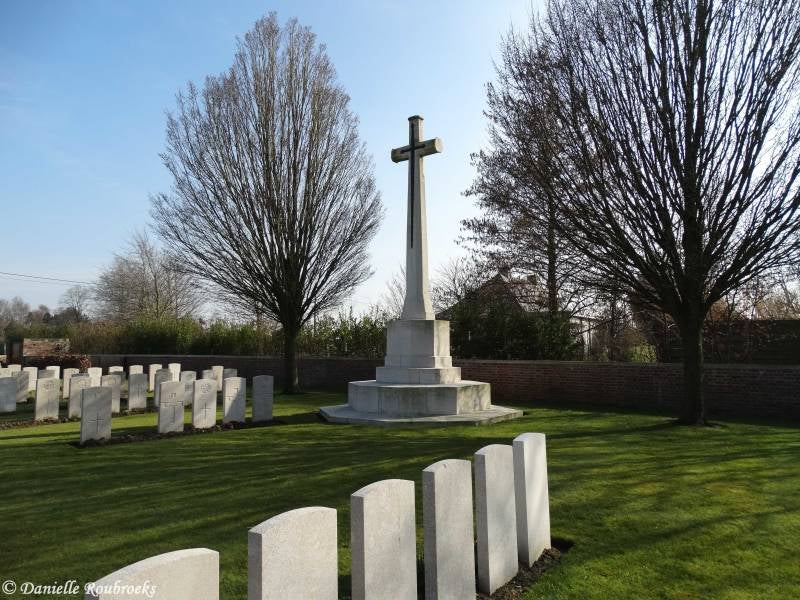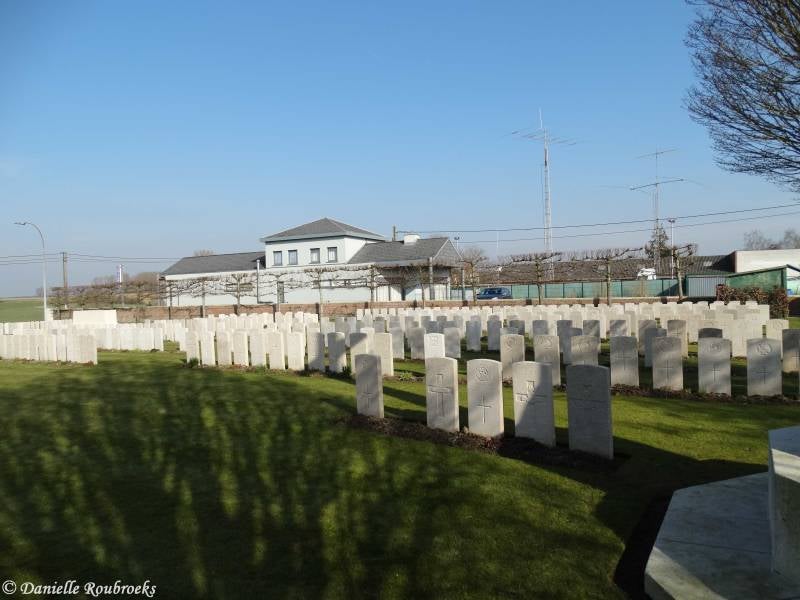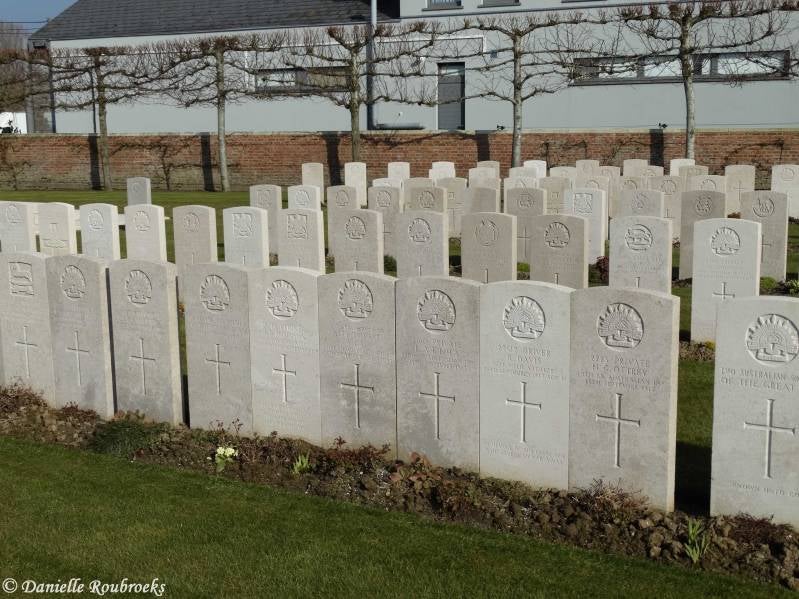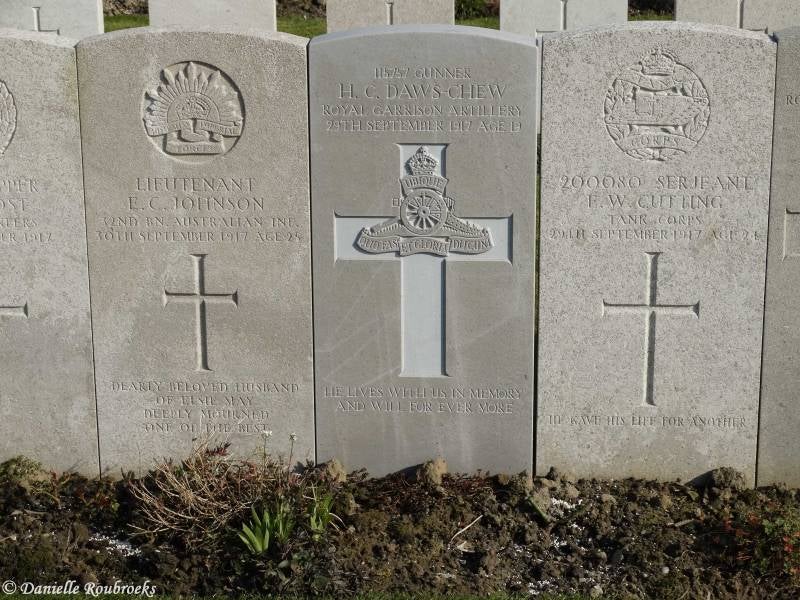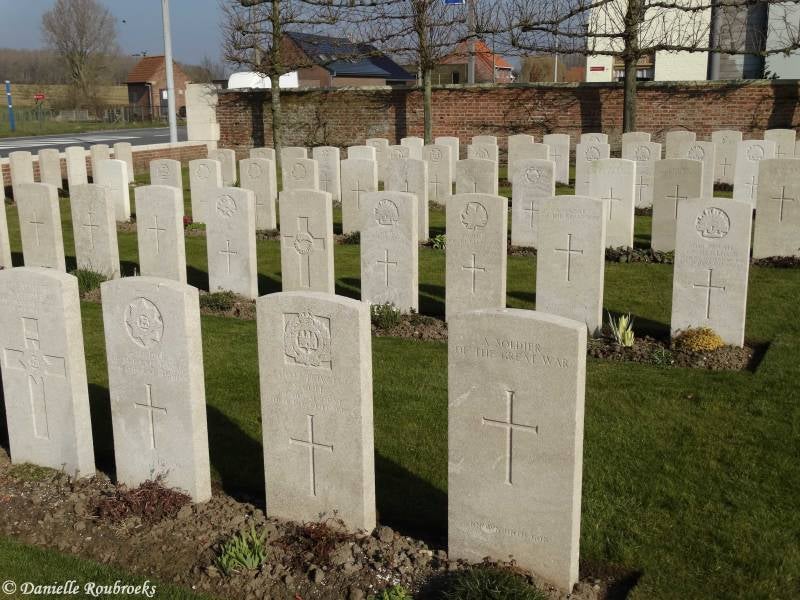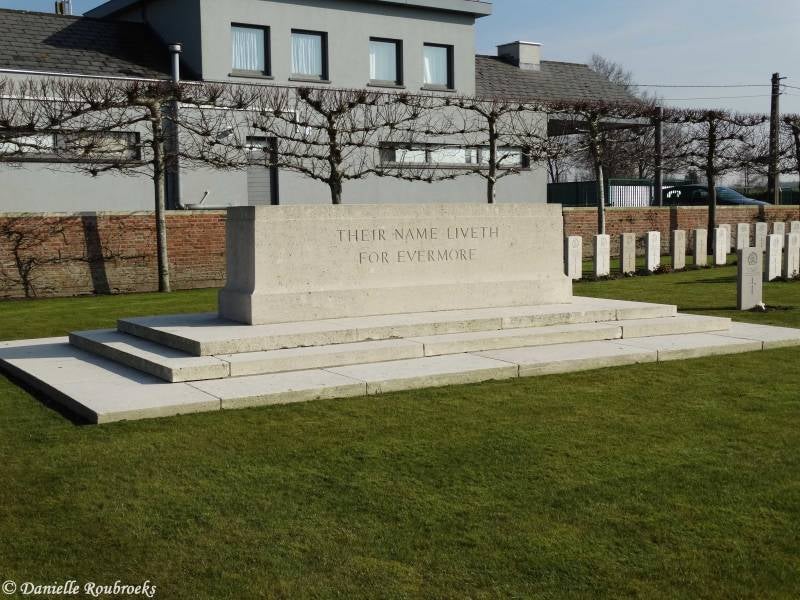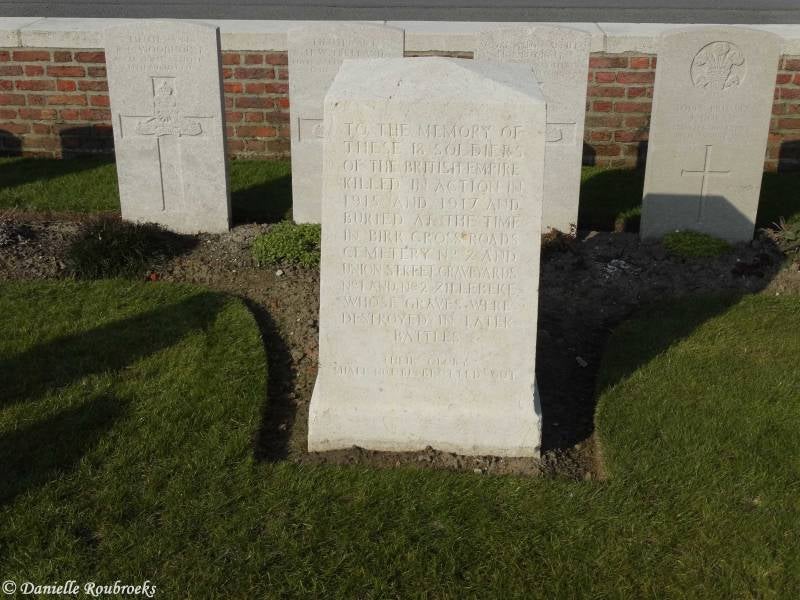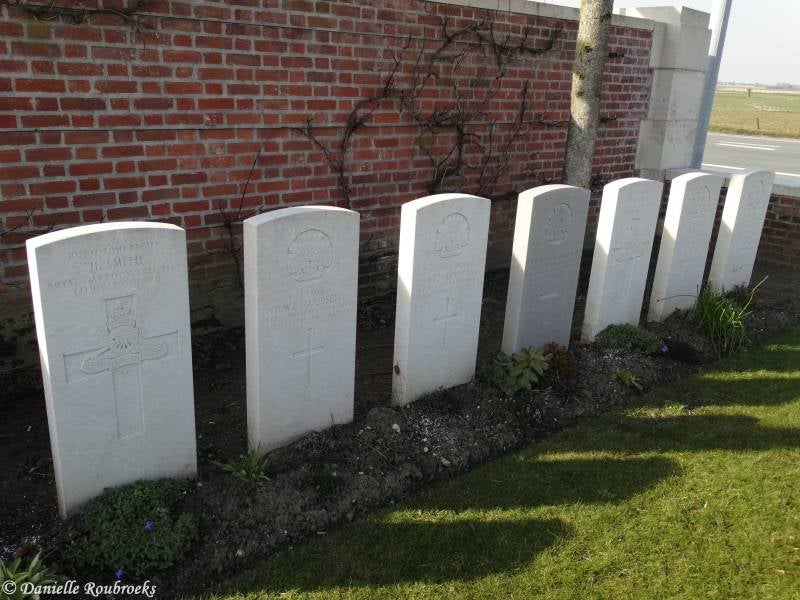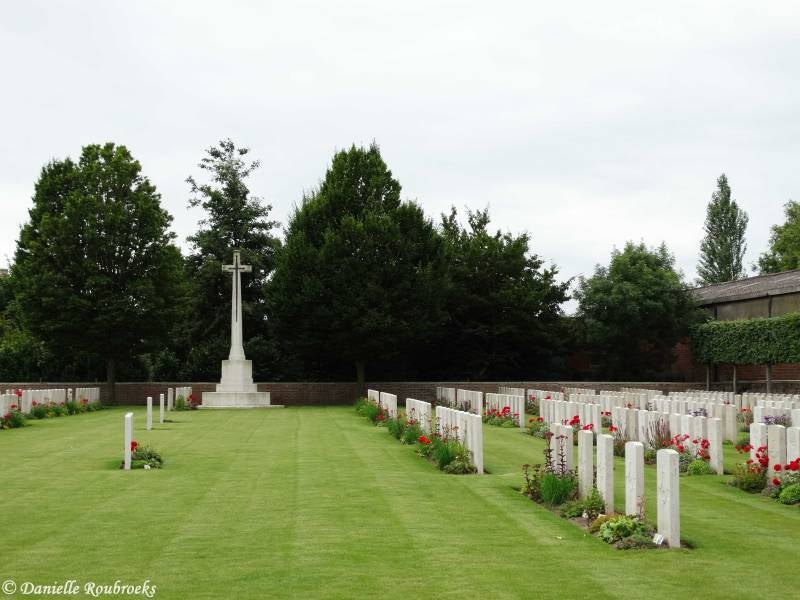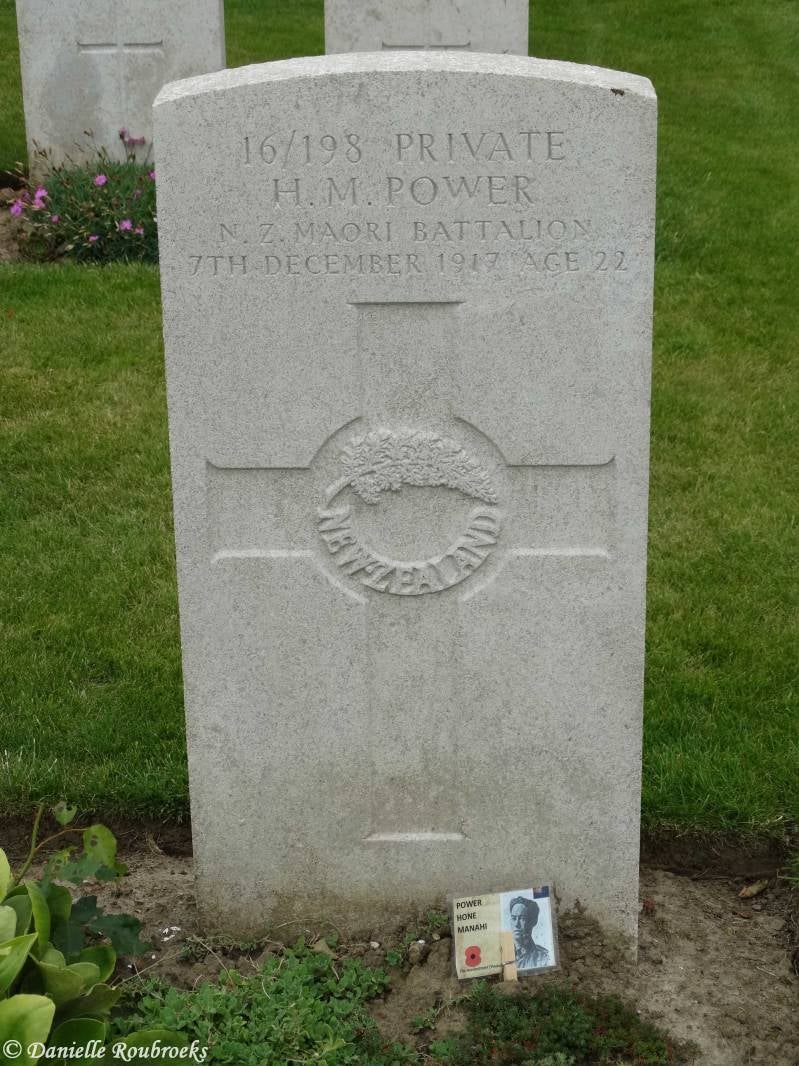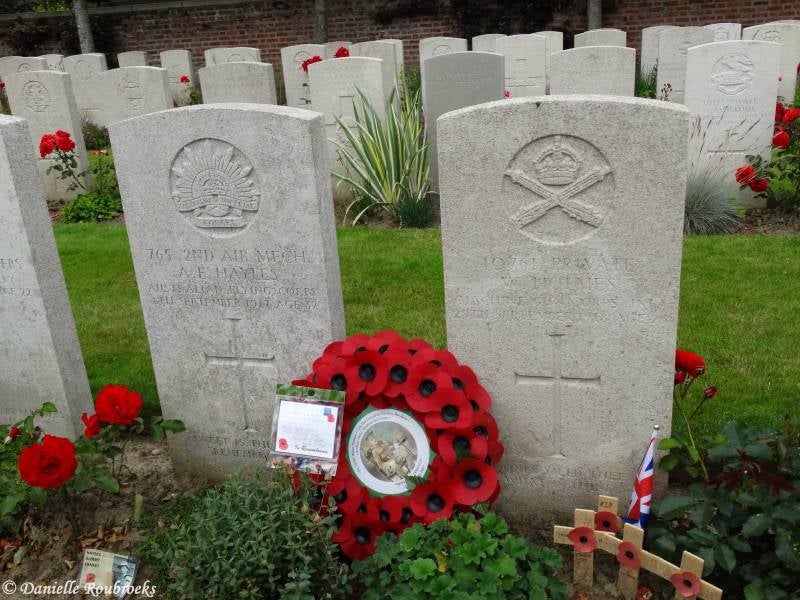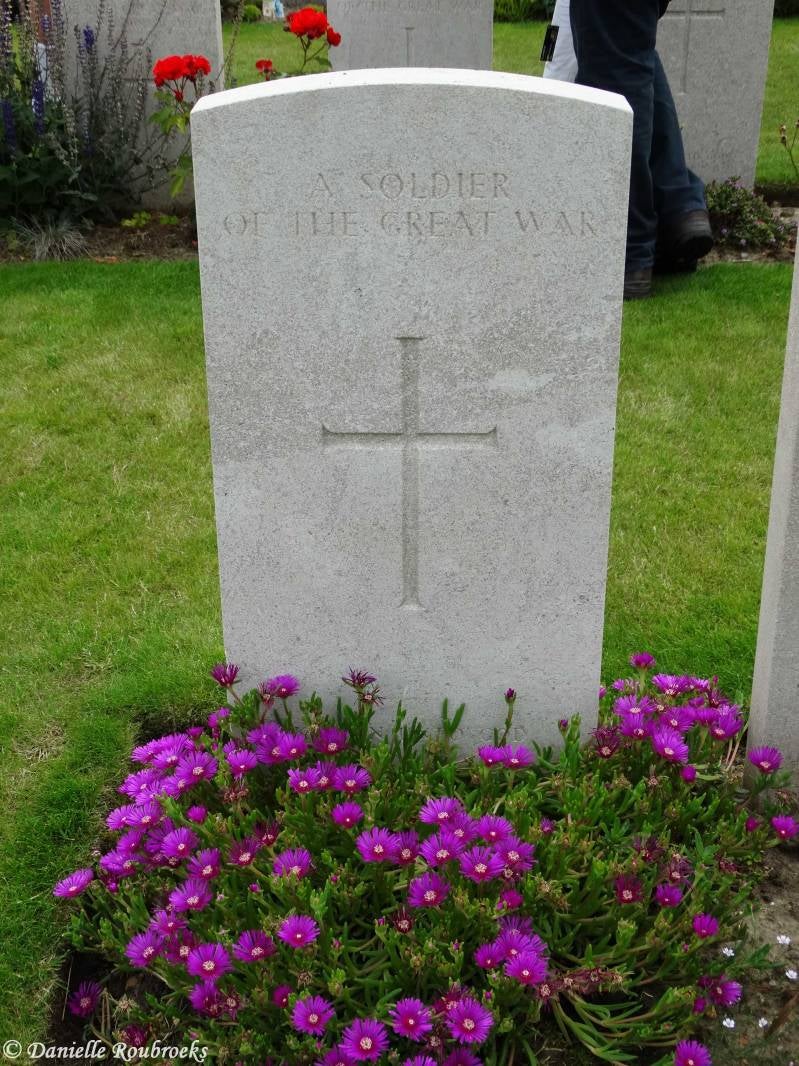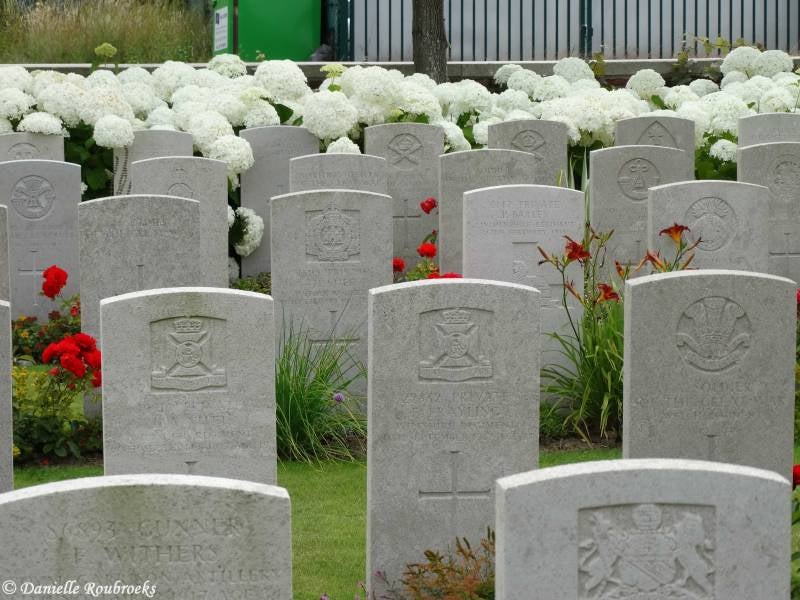Birr Cross Roads Cemetery
History Information (Source: CWGC)
The village and the greater part of the commune of Zillebeke were within the Allied lines until taken by the Germans at the end of April 1918. The village was recovered by the II Corps on 8 September 1918. Birr Cross Roads was named by the 1st Leinsters from their depot. The cemetery was begun in August 1917 and used as a Dressing Station cemetery until, and after, the German advance in 1918. At the Armistice, it contained nine irregular rows of graves, now part of Plot I, but was greatly enlarged when graves were brought in from the surrounding battlefields and from certain smaller cemeteries.
There are now 833 Commonwealth servicemen of the First World War buried or commemorated in this cemetery. 332 of the burials are unidentified, but there are special memorials to nine casualties known or believed to be buried among them. Other special memorials commemorate 18 casualties buried in Birr Cross Roads Cemetery No.2 and the Union Street Graveyards, whose graves were destroyed by shell fire, and one Belgian interpreter whose grave cannot now be found. The cemetery was designed by Sir Edwin Lutyens.
Served with
· United Kingdom (375)
· Australian (115)
· New Zealand (9)
· Canadian (4)
· Belgian (1)
Served in
· Army (502)
· Air Force (2)
VICTORIA CROSS
Captain Harold ACKROYD - Royal Army Medical Corps
Secondary Regiment: attd. 6th Bn. Royal Berkshire Regiment
Died 11 August 1917 Age 40
Country of Service: United Kingdom
Awards: Victoria Cross, Military Cross
Harold Ackroyd, °18 July 1877, was a British physician, scientific researcher, army officer. An officer with the Royal Army Medical Corps during the First World War, he was posthumously awarded the Victoria Cross for his actions in late July–early August 1917, during the Battle of Passchendaele.
Citation
An extract from "The London Gazette," dated 4th Sept., 1917, reads as follows:- "For most conspicuous bravery. During recent operations Capt. Ackroyd displayed the greatest gallantry and devotion to duty. Utterly regardless of danger, he worked continuously for many hours up and down and in front of the line tending the wounded and saving the lives of officers and men. In so doing he had to move across the open under heavy machine-gun, rifle and shell fire. He carried a wounded officer to a place of safety under very heavy fire. On another occasion he went some way in front of our advanced line and brought in a wounded man under continuous sniping and machine-gun fire. His heroism was the means of saving many lives, and provided a magnificent example of courage, cheerfulness, and determination to the fighting men in whose midst he was carrying out his splendid work. This gallant officer has since been killed in action."
Grave Reference: Special Memorial 7.
(Source: Wikipedia)


